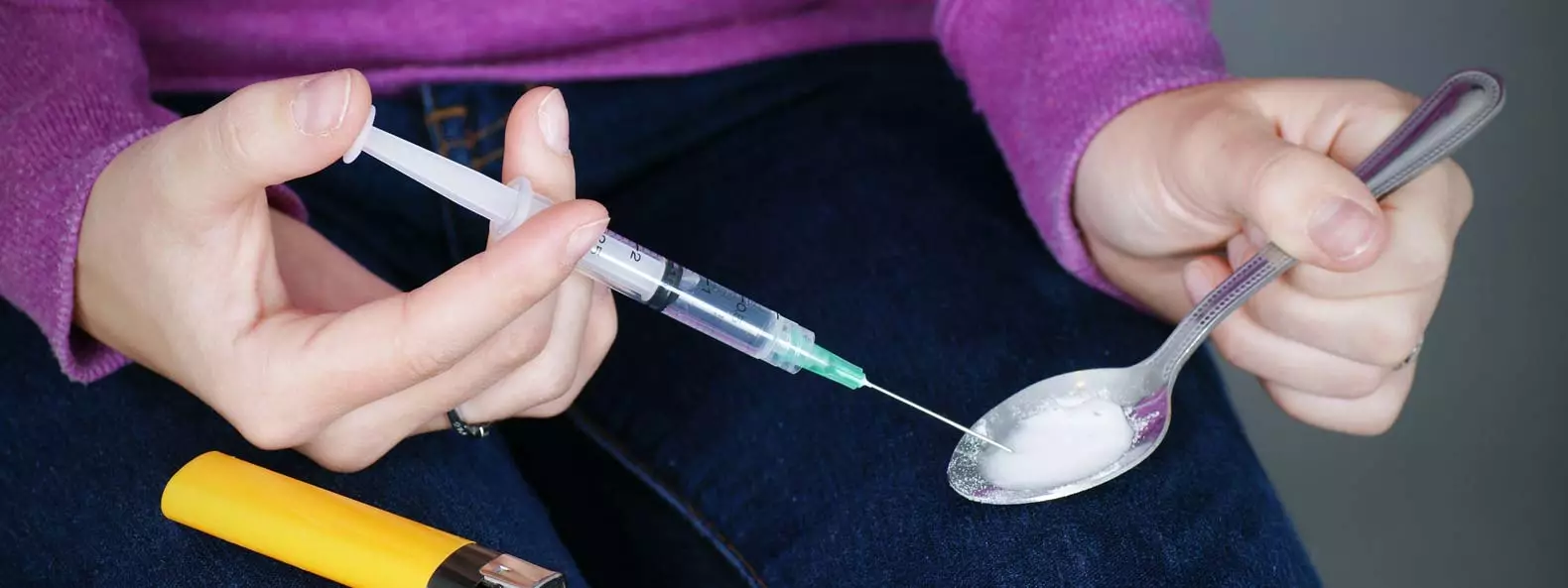
During the last few years, the use of methamphetamine has skyrocketed among drug users. In the late 90s and early 2000s, aggressive law enforcement campaigns drastically lowered the existence of many clandestine labs within the United States.
These campaigns had a significant effect on crystal meth use in the United States. However, these effects would only be temporary as Mexican drug cartels began making plans to flood our borders with this drug once again.
Currently, high potency super meth is available in nearly any town or city in the United States. Drug cartels began producing batches of extremely potent methamphetamine testing as high as 99.9% pure during lab research.
The tragic and frightening return of this deadly substance has given new importance to the availability of meth detox programs. Since meth isn’t as physically addicting as opiates and doesn’t bring a marked physical withdrawal period, many people question the need for meth detox.
However, it’s not the physical side-effects of meth detox that pose the most significant issues. The mental symptoms are the most dangerous byproduct of crystal meth abuse and the subsequent withdrawal period. The following section answers the question of “why detox from meth?”
Why Detox From Meth?
Multiple reasons exist regarding the importance of meth detox. Many users go through a period of drug-induced psychosis, and it’s important to have a safe medical environment for individuals in recovery.
Detoxing from meth also increases an addict’s chances to recover from the most detrimental effects of long-term meth addiction. Abusing the drug for extended periods produce the following results:
- Users experience increased blood pressure and heart rate. These increases significantly raise the chances of users suffering from a heart attack, stroke, and other pulmonary and vascular conditions. Cardiac issues are prevalent in many users of methamphetamine, and detox can reverse many of these issues.
- Drug-induced psychosis can present frightening scenarios for individuals suffering from meth abuse disorder and anyone around them. It’s not uncommon for users actively engaging in meth or going through the detox process to have full hallucinations or get violent. Users may feel increased feelings of paranoia and anxiety, often causing them to experience frightening auditory and visual hallucinations they can’t discern. Many users report witnessing shadow people or dark figures lurking around them.
- After detox, many users will enter inpatient treatment options where they will have the chance to engage in a normal life after completion. Most users that successfully detox from meth can return to normal home life and actively participate in the career of their choice.
- Detoxing from meth is also important to prevent the risk of a methamphetamine overdose. Symptoms of overdose include psychosis, paranoia, anxiety, stroke, heart attack, and death. Users will display extremely large pupils, constant sweating, and possibly speaking in ways that don’t make sense. It’s important to approach anyone that’s overdosed on meth with care because of the potential for violence.
In order to help an addict that wishes to detox from meth, individuals first must understand meth detox symptoms. Individuals will normally display visible signs of detox and withdrawal, which trained professionals should monitor.
Meth Detox Symptoms
Crystal meth is an unpredictable drug that brings unpredictable side effects during detox. However, these are some of the most common meth detox symptoms:
- Increased negative mental side-effects like paranoia and depression
- Body aches or tremors. Meth has a tendency to cause users to clinch their muscles and teeth. Once abuse stops, users experience aches and pains throughout their bodies.
- Extreme fatigue also becomes an issue. Crystal meth users get little to no sleep during their addiction. Once individuals refrain from using, extreme fatigue and an intense crash period kick in.
- There is also a significant lack of appetite or inability to eat. Users go so long without eating properly that stomach issues can arise that cause users not to develop an appetite.
- Vomiting is also possible during detox because of the anxiety or restlessness involved.
- In rare cases, users may experience seizures related to crystal meth detox.
During times of meth detox, users need to have access to meth detox facilities. Certain protocols and features of meth detox facilities benefit recovering users.
Features of Meth Detox Facilities
Meth detox facilities normally follow a distinct protocol to assist individuals suffering from meth abuse disorder in recovery. These facilities will employ several treatment options as well as provide supervision during the detox process.
Patients are monitored for vital signs to ensure they remain stable during detox. Trained medical professionals that understand the process of meth detox constantly provide treatment and guidance for patients during this time. The following section outlines methods of meth detox.
Methods of Meth Detox
Normally methods of meth detox include prescribing certain medications and IV fluids to prevent harmful side effects. The following medical treatments are normal features of meth detox facilities:
- Medical detox for meth dependence includes prescribing muscle relaxers or benzodiazepines to reduce aches and anxiety involved with the withdrawal period. Many users experience intense muscle pain, and high levels of anxiety as their bodies and minds get used to functioning without the drug.
- Receiving IV fluids also provides relief from muscle spasms and the negative effects of dehydration. Because meth is a diuretic, many users arrive at detox severely dehydrated. Besides the diuretic properties, many individuals suffering from meth abuse disorder simply forget to hydrate and eat regularly. They become obsessed with staying busy and engage in a behavior known as “tweaking” and often forget many routine daily tasks.
- Users will also receive medications for insomnia. Because meth alters sleeping patterns and detox causes high levels of stress and anxiety, returning to normal sleep is difficult during the initial phases of detox. OTC sleep aids typically provide little relief, and doctors prescribe stronger medications to promote rest in patients. Receiving the proper amount of rest becomes crucial for making a full recovery.
Upon successful detox, individuals must enter inpatient rehabilitation or engage in some form of a recovery program. These programs allow clients to work closely with counselors and psychiatrists to get to the root of the issue causing addiction.
Inpatient Treatment for Meth
One of the most important elements of inpatient rehab is meth and dual diagnosis treatment. Dual diagnosis includes identifying accompanying symptoms associated with meth abuse.
Because of the potential for drug-induced psychosis and the manifestation of other mental conditions, meth and dual diagnosis treatment become vital. The following list includes some of the most common dual diagnosis conditions associated with meth abuse.
- Psychosis
- Schizophrenia
- Bipolar disorder
- Manic depression
- Anxiety and panic disorder
Through treatment and one-on-one time with counselors and psychiatrists, individuals learn to cope with these conditions. CDT and DBT therapies may also be effective during treatment for meth addiction.
CBT and DBT for Meth Addiction
Cognitive-behavioral therapy for meth addiction has been effective during treatment for many individuals in recovery. This therapy specifically targets the following areas:
- The treatment of emotional responses
- Short-term memory issues
- The positive patient-counselor dynamic
- Using logic and reason to manage addiction and mental disorder
- Guiding treatment in a structured way
Although DBT therapy treats many of the same elements, this form of treatment is more targeted toward discomfort and pain they feel in certain situations. These feelings experienced by users in recovery are usually a direct result of methamphetamine abuse.
Recently, many individuals suffering from meth abuse disorder have found relief through the prescription drug Wellbutrin. This substance is known to reduce methamphetamine cravings in users recovering from meth abuse disorder.
Wellbutrin and Meth Cravings
Wellbutrin has been effective in treating post-acute withdrawal symptoms in methamphetamine users as well as reducing cravings. This prescription is normally given to patients attempting to quit smoking, but it’s also used for symptoms of ADHD.
Because of its effectiveness in treating ADHD, Wellbutrin interacts with the same receptors as methamphetamines. This can help reduce the cravings associated with methamphetamine recovery and ease post-acute withdrawal.
Post-Acute Withdrawal for Methamphetamine
Post-acute withdrawal symptoms of methamphetamine may linger for as long as six months for recovering users. The symptoms normally come in waves, occurring sporadically, but it’s still important to understand how to manage them.
The following symptoms are associated with post-acute withdrawal in recovering methamphetamine users:
- Intense craving periods
- Paranoia
- Insomnia
- Anxiety
An efficient inpatient recovery program is effective at educating recovering individuals suffering from meth abuse disorder in post-acute withdrawal. This education gives individuals the best chances of succeeding in abstinence. Long-term meth recovery is possible through the right treatment methods and levels of willpower.
Long Term Meth Recovery Is Possible
The odds of long term meth recovery are increased significantly through detox facilities and post-detox treatment options. After completing detox, it’s vital that individuals seek some form of rehabilitation, regardless of the form.
Long term meth recovery is possible with the following post-detox treatment options:
Inpatient Rehabilitation
As discussed previously in the article, inpatient rehabilitation gives users a significant chance of remaining abstinent. The help of counselors and psychiatrists is the most important element of this treatment and peer meetings.
Live-In Rehabilitation
Live-in rehabilitation centers provide more of a home-like experience. These are also sometimes known as halfway houses.
Individuals engaging in recovery in live-in rehab centers normally can participate in everyday activities. Normal jobs may be held and contact with family and loved ones. However, a curfew is normally in place and the administration of random drug testing.
Users still participate in counseling with psychiatrists, although it’s on an outpatient basis. Most live-in rehabs also require clients to participate in group meetings either in the house or at Narcotics Anonymous locations.
Outpatient Treatment
Outpatient treatment is also available in some recovery scenarios. Many users participate in outpatient treatment from the beginning. Some individuals choose to continue therapy on an outpatient basis after inpatient rehab.
The most important point to keep in mind during outpatient treatment is the importance of keeping a strong support system. Individuals normally still reside in their regular home setting with their families, and a level of accountability must remain.
Many outpatient treatment options conduct random drug testing for patients to ensure that relapses don’t occur. Patients also work one-on-one with mental health specialists and receive education regarding drug addiction and underlying conditions.
In each of these recovery options, patients must continue to remain mindful of their mental conditions. Treating underlying causes is the primary objective of any rehabilitation program, and the failure to do so will normally result in relapse.
Treating the symptom and not the condition is normally a surefire way to trigger a relapse. An underlying mental condition or trauma is almost always at the center of every major addiction.
Engaging in continued therapy after treatment is also important. After graduating from a treatment program, this is one of the most important elements.
Continued Therapy
After graduating from a rehab program, it’s important to engage in continued therapy or another form of counseling. Depending on the user’s preference, there are several options for continued therapy.
Peer groups and Narcotics Anonymous meetings are effective for continued therapy and recovery. Additionally, many individuals recovering from meth abuse disorder find assistance in continued meetings with a primary care physician in the mental health sector.
This can be important for continuing to remain active in treating underlying conditions. It’s possible that further prescriptions will continue to help individuals suffering from meth abuse disorder recover. However, it’s important to understand that any prescriptions are only a short-term solution and should never be used as a long-term remedy.
Understanding all of the possible remedies for methamphetamine addiction, what is the best meth detox method?
Discover the Best Meth Detox at Circle of Hope
The best meth detox method normally includes options for a detox program and inpatient rehabilitation options. This gives recovering clients the most success for remaining abstinent.
Circle of Hope Treatment forms a top-tier, luxury addiction treatment facility aimed at assisting individuals in recovering from various addictions. The staff at Circle of Hope specializes in meth recovery and educates patients in strategies for long-term recovery. Please reach out to us today for more information on our programs and get on the path to recovery, you deserve a better future!

